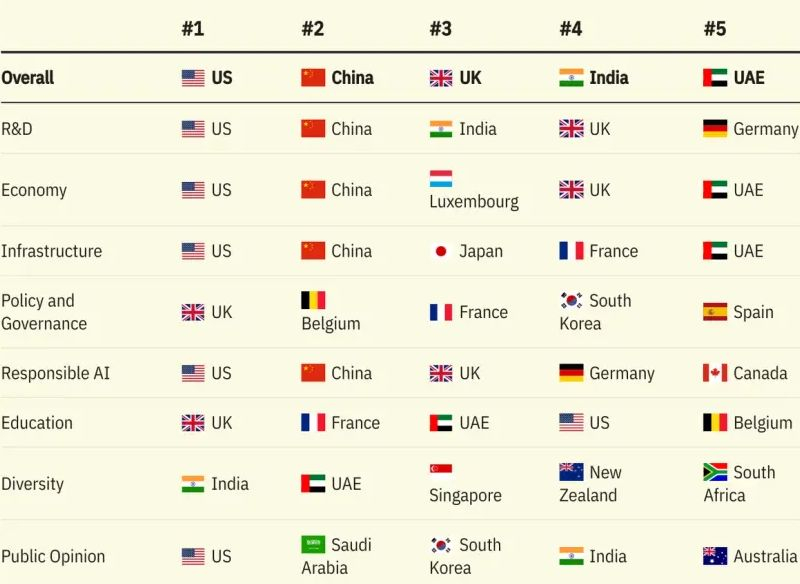The development of artificial intelligence systems in different countries takes into account the specifics of the environment in each region, and therefore seems uneven to specialists. For example, if the USA and China lead in terms of infrastructure development and the amount of scientific research in the field of AI, then the legislative regulation of this area of activity in these countries is very lame.

Image Source: Intel
The publication Semafor discusses the rating of countries created by Stanford University on various aspects of the development of artificial intelligence, and the United States and China can be classified as leaders in it according to the following criteria: research activity, economic component, infrastructure development, responsibility for the use of AI. The USA is in first place in this ranking, China is in second, but the composition of the rest of the top five is constantly changing.

Image source: Semafor
Japan, for example, ranks third in the world in terms of infrastructure development, but nowhere else does it show itself enough to be in the top five. In the field of legislative regulation of AI and control over its spread, the UK is in the lead, Belgium, where the administrative center of the European Union is located, is in second place, and France is in third place. In terms of the level of development of educational programs in the field of AI, the UK leads, while the USA is only in fourth place. It is noteworthy that in terms of public opinion’s favorability towards the development of AI, the United States is also in the lead, but Saudi Arabia is in second place, and Australia closes the top five.
If we consider research activity, the United States surpasses other countries in the number and variety of large language models for artificial intelligence, but Chinese developers are ahead of their geopolitical competitor in terms of purely academic activity and patent activity. For financing, the United States relies on private capital, while China relies on public capital, but it is often intertwined with government capital. Although the United States and China can equally boast of having a government strategy for the development of AI, legislative regulation in this area is lame in both countries, although the situation in the United States is slightly better. By the way, China also surpasses the United States in terms of availability of high-speed communication channels in terms of infrastructure conditions for the development of AI. The rating cannot claim objectivity, even due to limited access to certain statistics in China, but it gives a general idea of the state of affairs in the global industry.